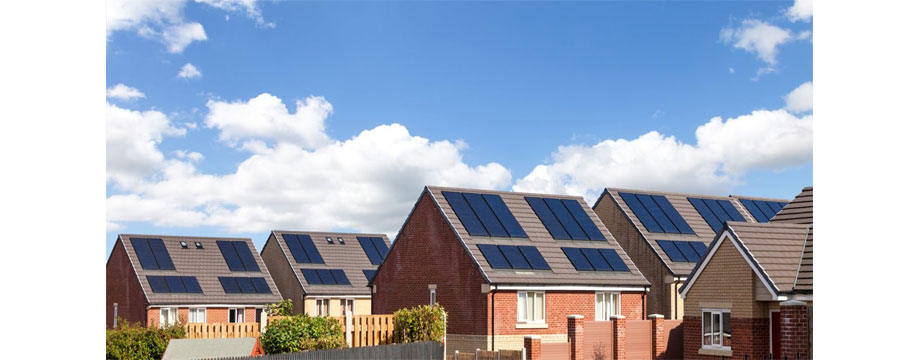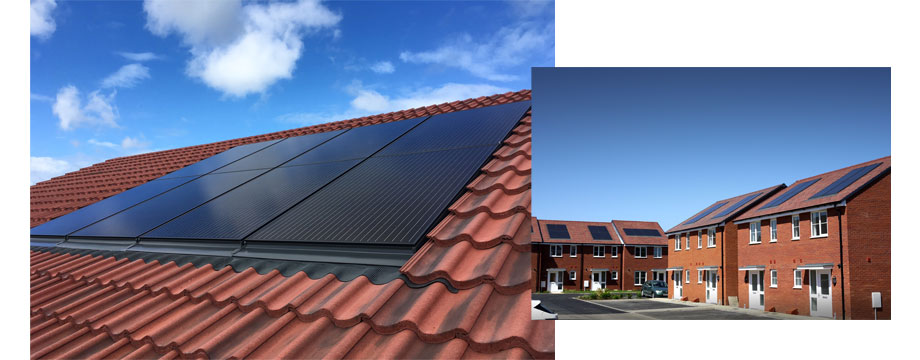The impending introduction of Part L of the Building Regulations is the latest step on the journey to generate more low carbon and energy efficient social housing across the UK.
Add in the current unprecedented escalation in energy prices and the impending cost of living crisis for many tenants, and homes provided by the public sector must now, more than ever, be both sustainable and help to mitigate consumer energy cost worries.
Stuart Nicholson from Marley says the strategic specification of proven, easy to install and energy efficient solar PV as part of a sustainable roofing solution, can have a positive impact for local authorities and their tenants.

The recent Spring Statement reinforced government ambition to drive the adoption of sustainable answers for homes. The decision to make energy efficient materials such as solar panels, heat pumps or insulation exempt from VAT, is yet another sign that policy makers remain intent on encouraging consumers to embrace solutions that will ensure dwellings play a central role in meeting the nation’s 2050 net zero target.
Local authorities and social housing providers, responsible for the delivery of new housing stock, as well as retrofitting and maintaining existing properties, will be essential when it comes to transforming the energy efficiency performance and future sustainability of the homes they oversee.
And they must also now factor in another emerging consideration.
Helping to mitigate energy price increases
The public sector, including local authorities and social housing providers, is under pressure from tenants worried about the cost-of-living crisis and the dramatic rise in energy prices. People want to see that those responsible for the energy effectiveness of the homes they inhabit have the answers that will create energy efficient and affordable living outcomes.
The most up-to-date figures recently released on Gov.UK* show that 13.2% of households in England are in fuel poverty. The spectre of even more people falling into fuel poverty, which was recently redefined as ‘a household with required fuel costs that are above average and if they were to spend that amount, they would be left with a residual income below the official poverty line’ is causing concern for many, not least those residing in social housing.
Tenants are therefore expecting local authorities to help them and tackle the energy challenge through a range of measures such as improved insulation, better build quality and the inclusion of low carbon, energy efficient technologies, including solar PV.

The solar solution
Improvements in energy efficiency to both new build and existing social housing (and lower carbon emissions and consumption) cannot simply be delivered by enhancing the building fabric solely.
It will likely also require the specification of additional low carbon technologies, such as solar PV. Solar technology is tried and tested, readily available and has become much more affordable in recent times. Indeed, such is the momentum behind the adoption of the technology, Solar Energy UK predicts that the changes to Part L could lead to a five-fold increase in the number of new homes specified with solar technology.
The positive news is that the public sector is making solid progress as it recognises the need to act. Compared to private housing counterparts, local authorities and social housing providers are already investing in low carbon technologies such as solar PV. This is ensuring that they are strongly positioned to satisfy the demands of Part L and are, at the same time, also helping address tenant worries about rocketing energy prices thanks to the specification of solar PV incorporated into roofing solutions.
Public sector bodies actively seeking the benefits that solar PV can deliver to create better overall outcomes within new build or retrofit programmes, should consider some of the strategic and practical ways of achieving this.
Think holistically. Rather than examining housing stock roofing upgrades on an incremental basis, local authorities should view property stocks holistically and collectively by age. When retrofit, maintenance or roof replacement is required for a volume of houses, it makes both economic and resource sense to incorporate technologies such a solar PV at that stage, as opposed to taking a piecemeal and operationally inefficient approach.
Invest strategically. Look to invest primary capital expenditure as effectively as possible so that the most expensive cost items such as labour and scaffolding are incurred just once. This approach also provides minimum inconvenience for tenants as an increased number of properties can be improved using a sustainable roofing solution at any one time.
Promote the benefits. Conscious of tenant views, it should also be acknowledged that solar PV solutions are more accepted than they once were by the consumer. This has been helped by improvements to the final aesthetics viewed on the roofscape. Aside from better visual appeal, social housing providers should actively promote the message that sustainable energy generation thanks to solar installation can also lead to lower energy costs. This will be welcomed by tenants and can help create more solar PV advocates to support future implementation.
Full system solution from a single source. Finally, when dealing with new build or upgrading housing stock, working with a single source roofing system supplier that can offer a full roofing solution makes sense. Public bodies should also make sure they investigate the system supplier’s own commitment to sustainability to ensure they reflect their own. Such an approach offers many benefits such as the certainty of product availability and guaranteed long term system performance.
Solar Energy UK has produced a useful procurement guide for local authorities, covering all aspects of solar power. Copies can be obtained at
www.solarpowerportal.co.uk
For more information on Marley SolarTile®, visit: www.marley.co.uk/solar
- Log in to post comments













